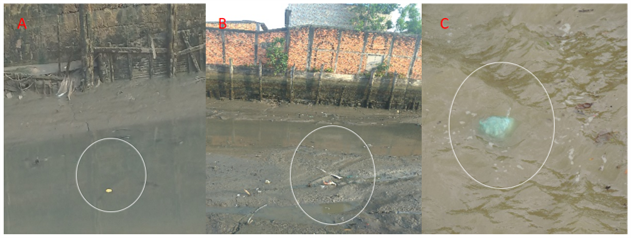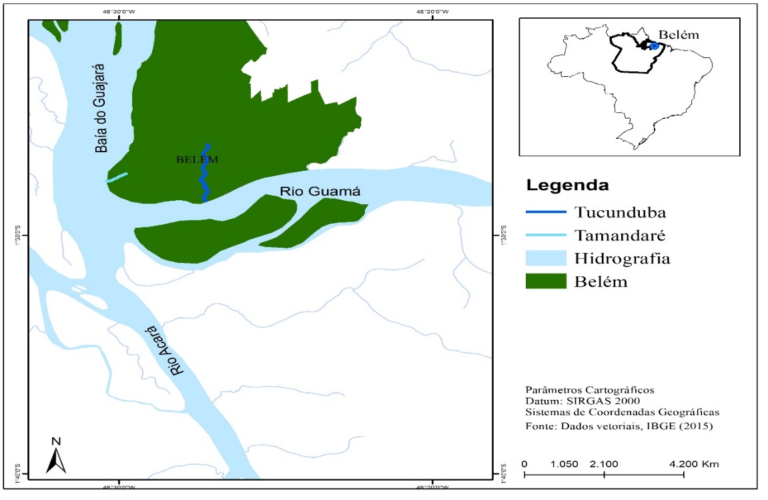
Exemplos de plásticos ao longo de 12 h nos canais de drenagem Tamandaré e Tucunduba.
You may have seen that throughout Belém city there are several drainage channels, but do you know what they are for? The drainage channels can be natural or artificial and have the collecting and transporting function of the precipitated waters to a receiving body (Porto Source: Gilbert et al., 2009).
So that means that in the channels only water must be found? Yea!! But unfortunately, this is not a reality in Belém city. You probably have already seen in the media the various disorders that are caused to society when these channels end up overflowing due to the high amount of waste, where streets are flooded, people lose furniture, disease outbreaks, etc.
Unfortunately, this is not the only problem caused by the waste present in the channels. Jambeck et al. (2015) comment that waste can reach the oceans through drainage networks in coastal areas. Can you see the scale of the problem? The waste that is produced by the people in the cities manages to reach the Oceans!
In this problem, a study under development by the master student Gabriel Pompeu of the Pará Federal University aims to quantify the residues transported by two drainage channels (Tucunduba and Tamandaré) that flow into important water bodies in Belém city (Guamá river and Guajará bay).

Map of the study area, with the drainage channels presence where the quantification of solid waste will occur.
Visual analyzes were carried out for approximately 12h during four days, following the sunlight. For this period, the author reached an unbelievable amount of 4.800 waste transported in the two drainage channels! Besides, the researcher realized that the composition of this waste is predominantly plastic materials.
These initial results are worrisome. If we imagine several cities in Brazil dumping 4.800 residues every 4 days, this figure multiplies considerably. This huge load of solid waste is being transported from cities directly to the oceans. Besides, these materials are not organic or easy to decompose, since most found materials are plastics, which on average take 400 years to decompose.
Do not throw your garbage on the floor or in the city canals. And remember to separate organic and inorganic waste. Do you want to know more? Join OCA Academic! There you will find all the works produced by our team and researchers from Amazon.
References
Jambeck, J. R; Geyer, R; Wilcox, C; Siegler, T. R; Perryman, M; Andrady, A; Narayan, R; Law, K. L. Plastic waste inputs from land into the ocean. Science, v. 347, p. 768-771, fev. 2015.
Porto, R, L; Filho, K. Z; Tucci, C. E. M; Bidone, F. Drenagem Urbana. In: Tucci, C. E. M. Hidrologia: Ciência e Aplicação. Porto Alegre: ABRH, 2009. p. 805-842.
